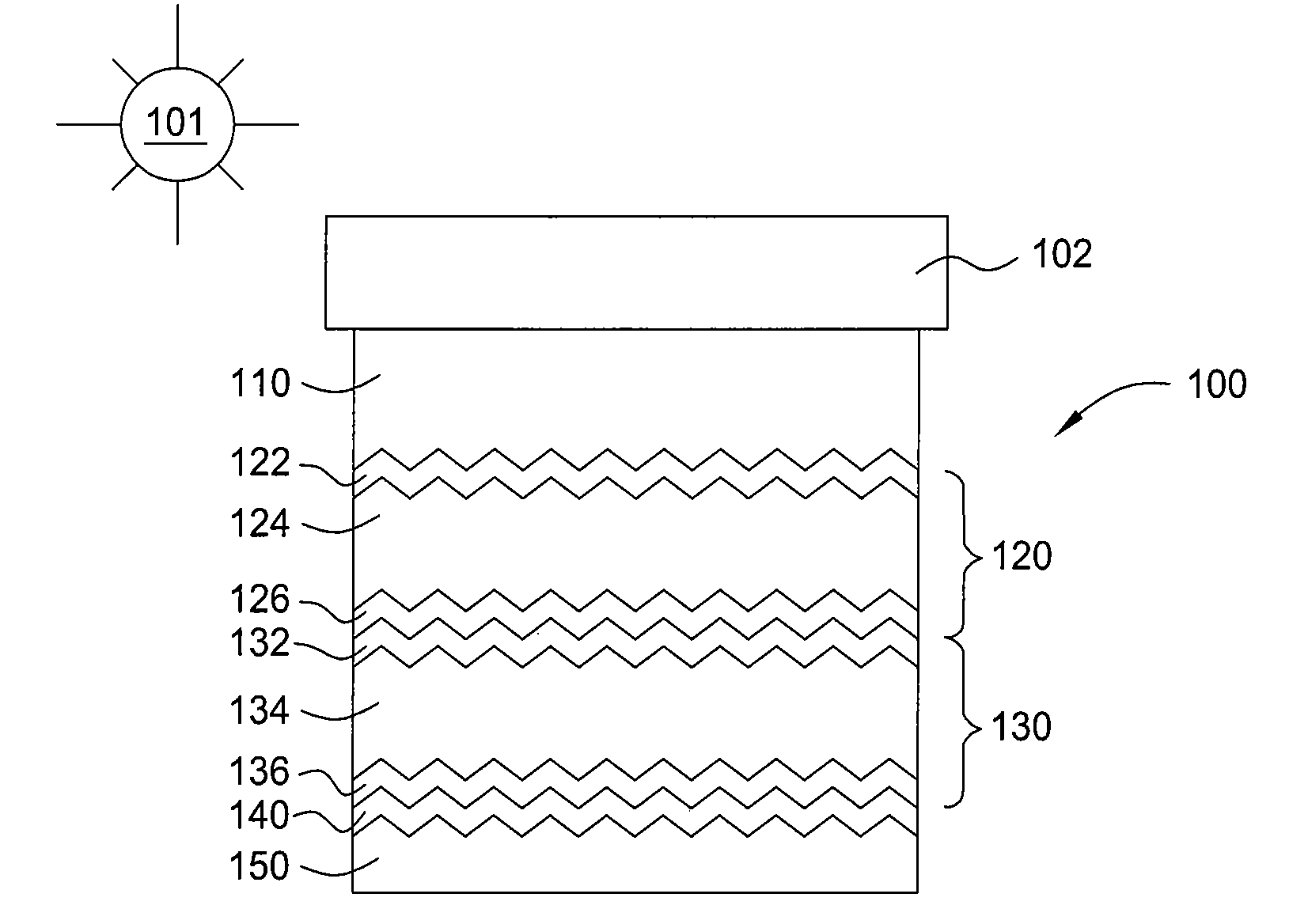Multi-junction solar cells and methods and apparatuses for forming the same
a solar cell and multi-junction technology, applied in the field of solar cells, can solve the problems of film solar cells degrading, device stability being less than desired, and thin film solar cells including
- Summary
- Abstract
- Description
- Claims
- Application Information
AI Technical Summary
Benefits of technology
Problems solved by technology
Method used
Image
Examples
examples
[0081]The examples disclosed herein are exemplary in nature and are not meant to limit the scope of the invention unless explicitly set forth in the claims.
[0082]Substrates having a surface area of 4,320 cm2 were processed in an AKT 4300 PECVD System, available from AKT America, Inc., of Santa Clara, Calif., having an interior chamber volume of 130 liters. Layer 1 was deposited in a first chamber of the PECVD system. Layers 2-4 were deposited in a second chamber of the PECVD system. Layer 5 was deposited in a third chamber of the PECVD system. Layers 6-11 were deposited in a fourth chamber of the PECVD system. The spacing during deposition of layers 1-11 was set to 550 mil and the temperature of the substrate support was set to 200° C. The deposition parameters are set forth in the FIG. 6 to form a tandem p-i-n junction solar cell. Phosphine was provided in a 0.5% mixture in a hydrogen carrier gas. Trimethylboron was provided in a 0.5% mixture in a hydrogen carrier gas. The hydrogen...
PUM
 Login to View More
Login to View More Abstract
Description
Claims
Application Information
 Login to View More
Login to View More - R&D
- Intellectual Property
- Life Sciences
- Materials
- Tech Scout
- Unparalleled Data Quality
- Higher Quality Content
- 60% Fewer Hallucinations
Browse by: Latest US Patents, China's latest patents, Technical Efficacy Thesaurus, Application Domain, Technology Topic, Popular Technical Reports.
© 2025 PatSnap. All rights reserved.Legal|Privacy policy|Modern Slavery Act Transparency Statement|Sitemap|About US| Contact US: help@patsnap.com



